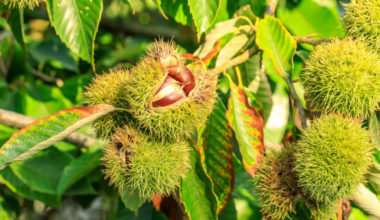Palms form a botanical family called Arecaceae. The latter is part of the flowering plants in the order Monocotyledons, which also includes banana trees, rushes or orchids.
The palm tree is not a tree in the strict sense of the word: it has no trunk but a stipe, a stem filled with pith or fibers, and has no branches but palms. The palm family covers a great diversity, with more than 2,600 species divided into 180 genera.
To put it simply; a coconut tree does not produce palm oil and a palm tree does not produce coconuts.
Contents
Does every palm tree grow coconuts?
The answer is no! Most people assume that all palm trees are coconuts because of the prevalence of coconuts in popular culture.
However, only one specific palm species bears coconuts. The coconut palm and the oil palm are two distinct trees that look very similar. The coconut palm is actually the most cultivated palm tree in the world. They are strong and their roots extend deep into the ground. They are sturdy trees that can live 100 years.
In the United States, coconut palms are only grown in the tropical region of Florida. Palms that appear in places like California and Arizona are not coconut palms. Coconut palms need the moisture and humidity of a tropical or subtropical environment to survive and thrive. Despite its name, the coconut is not a nut. It is a drupe or “fruit.”
As all members of the palm family bear fruit, the coconut palm is no exception. The uses of the coconut are extensive and have been enjoyed by humans since the beginning of time. Coconut meat, coconut water and coconut oil are just a few of the products for which the coconut fruit can be used.
To add to the confusion, many palms bear the common name of coconut tree when they are not, such as Jubaea chilensis (Chilean coconut tree), Syagrus romanzoffiana (feathery coconut tree), or Lodoicea maldivica (seashore coconut tree) whose fruit called “coco-buttocks” bears two characteristic lobes.
How do I identify a coconut palm tree?
The two plants are often confused and are not even trees!
The coconut palm is simply a species of palm tree. It can grow up to 90 ft tall and has a slender, tapering stipe with large, bright green pinnate palms measuring between three and six meters. The ovoid nuts hang from the base of the palms high up.
Native to India, the coconut palm is now found in all the islands of the Pacific and Indian Oceans as well as in Africa and America. However, its distribution area remains limited to warm climates, as it can die if temperatures drop below 50°F.
What is the difference between a coconut palm and a palm tree?
The coconut palm is a large palm tree native to tropical areas of the world. In its natural habitat, it can exceed 90 ft in height. Its trunk, called stipe, is thin and smooth, and its palms long, stiff and narrow. They have a light appearance and are pinnate, i.e. composed of two rows of leaflets arranged around the central vein.
Young, highly veined coconut leaves are, however, whole or bifid (split in half lengthwise) and divide over time. They can measure up to 18 ft in length! Unlike many palms, their petioles are not thorny.
How can I tell what kind of palm tree I have?
There is a simple way to tell if you have a coconut tree or a palm tree; you just have to look at their petioles, if it is thorny, there is no doubt, it is a palm tree.
If the petiole of your plant is not thorny, there is thus strong chance that you have a coconut tree!
What is a palm tree?
A palm is a generic term for any tree that can be classified in the class Palmaceae. This class of trees contains over 3000 species and over 230 families. These palms grow all over the world, but in the United States, they are mainly limited to Florida and California.
All palms are identifiable by their leaves. All palms have leaves called “fronds” that have a fan-like shape and a structure made up of sections that grow from a single point. Each species of palm has different lengths of leaves, some as long as 10 feet.
Palms vary from large, stocky trunks covered with scales to tall, slender trees with small heads topped with fronds. They can thrive in both potted and planted environments. Palms have exceptionally hard outer trunks, but internally they are similar to virtually all other tree species. Palms produce fruit and flowers.









